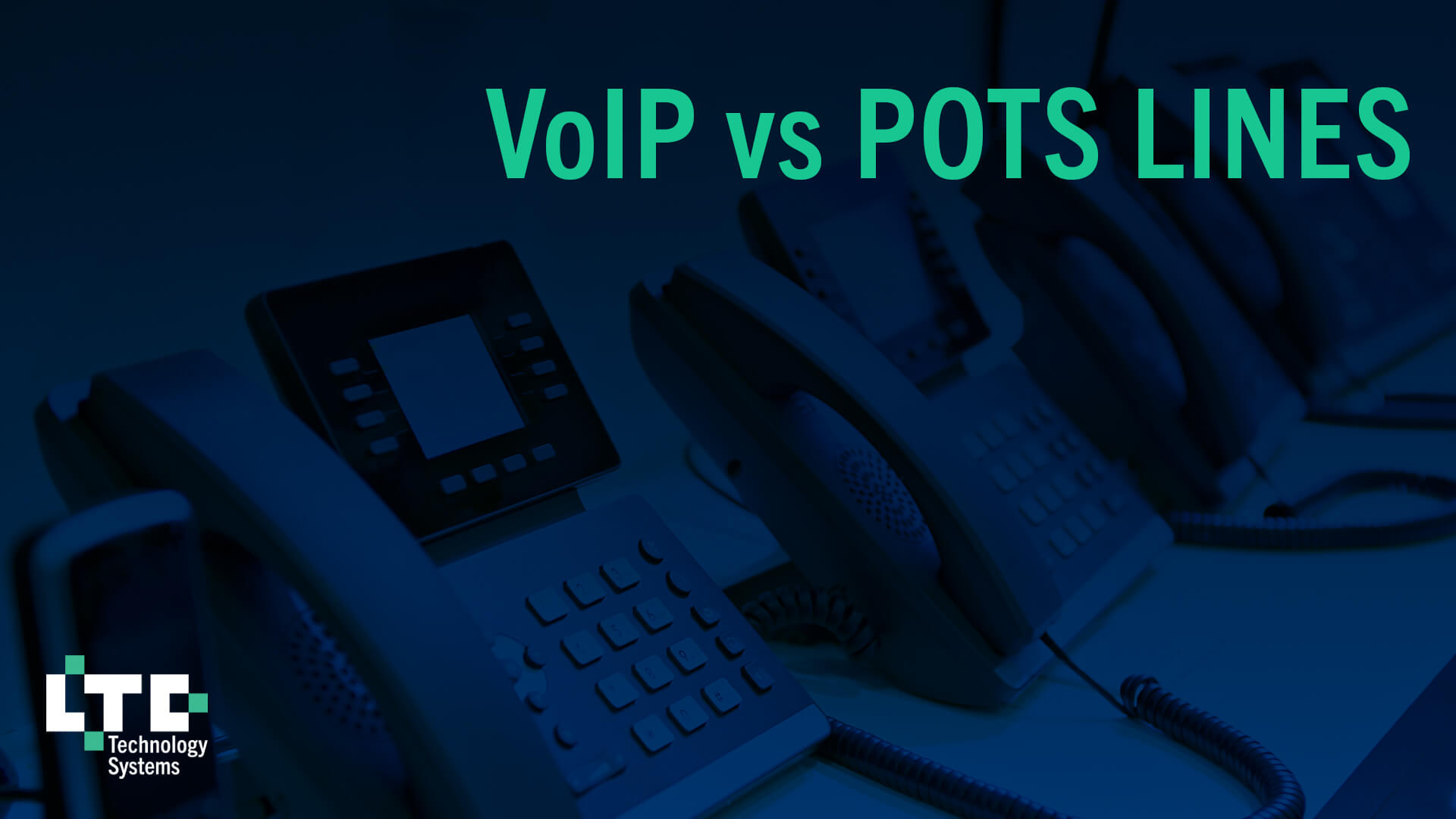The phase-out of copper POTS lines for phones and the growing popularity of Voice over Internet Protocol (VoIP) phones can be attributed to several technological, economic, and practical factors. Here are some key reasons for this transition:
Technological Advancements: VoIP technology has advanced significantly over the years, offering better call quality, reliability, and a wider range of features compared to traditional copper-based landlines. VoIP phones use the internet to transmit voice data, which allows for more efficient data compression and transmission, resulting in clearer calls. Pathways for POTS lines and VoIP phones from your office to the data center typically travel back on the same infrastructure making them equally dependable.
Cost Savings: VoIP phone services are generally more cost-effective than traditional landlines. Businesses and individuals can save money on long-distance and international calls since VoIP calls are often included in flat-rate or low-cost plans. Additionally, VoIP eliminates the need for separate voice and data lines, reducing infrastructure costs. The cost of ownership is drastically lower as well. Changes to telephone systems used to entail a technician to come on site and make changes in the head unit which included changing out expensive hardware as well. Now, VoIP allows changes to be made remotely and immediately for no additional charge.
Flexibility and Scalability: VoIP systems are highly scalable and adaptable to the needs of businesses and individuals. It’s easy to add or remove phone lines, features, and extensions, making VoIP a flexible choice for organizations with changing requirements. This scalability is particularly valuable for businesses experiencing growth or downsizing.
Integration with Other Technologies: VoIP phones can be integrated seamlessly with other communication and collaboration tools, such as video conferencing, instant messaging, and email. This integration enhances productivity and allows for a unified communication experience, which is increasingly important in today’s interconnected world.
Portability: VoIP phones are not tied to a physical location in the same way traditional landlines are. Users can make and receive calls from anywhere with an internet connection, making them ideal for remote work and business travel. Cellphones applications are included and a great feature especially for employees that are in and out of the office. It also allows employees who work from home to call out from the business number instead of using their personal number:
Environmental Considerations: VoIP phones are generally more eco-friendly than copper-based landlines because they require fewer physical resources and generate less electronic waste. VoIP also tends to have a lower carbon footprint due to more efficient data transmission.
Infrastructure Upkeep: Maintaining aging copper-based landline infrastructure can be costly and challenging. Many telecom providers are phasing out their copper networks in favor of newer technologies like fiber-optic networks. As a result, copper POTS lines are becoming less reliable and more expensive to maintain.
Consumer Preferences: As people become more accustomed to using the internet for various communication purposes, they are more inclined to adopt VoIP technology for their phone services. Additionally, younger generations are less likely to see the value in traditional landlines and are more likely to rely on mobile phones and VoIP for their communication needs.
Enhanced Features: VoIP phone services often come with advanced features like call forwarding, voicemail-to-email transcription, auto-attendants, and call analytics. These features improve communication efficiency and can be customized to suit individual or business needs.
In summary, the phase-out of copper POTS lines in favor of VoIP phones is driven by the technological advantages, cost savings, flexibility, and environmental considerations associated with VoIP. As the technology continues to evolve and improve, it is expected to become even more prevalent in the telecommunications market, gradually replacing traditional landlines for both personal and business use.



